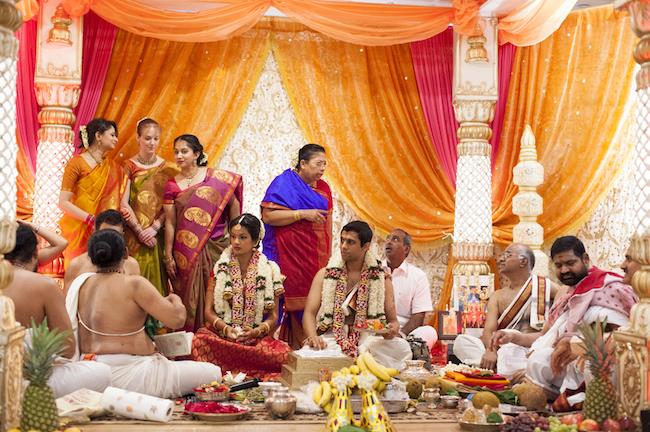South India Wedding Ceremony
South India Wedding Ceremony:
India is famous for its rich tradition and culture. Rituals and customs accompany every activity in Hinduism. Here the South India Wedding ceremony has a long belief and noble sentiment among the people who follow Hinduism. Especially in South India, the wedding tradition starts after the couple’s engagement. Before the marriage, the Bride and groom’s houses are decorated with flowers and trees to do well for their future. We can see at the venue of the engagement ceremony in South India the full-grown plantain trees decorated at the gate posts. The festoons with the mango leaves hang overhead of the entrance. The screw pine petals are arranged at the head of the house. The women draw beautiful Rangoli designs on the doorsteps of the house.
Sacred Rituals of Wedding:
The bridegroom is brought to the marriage mandapam in a procession from a temple. During this procession, the Bride’s parents escort him, and the Nadaswaram band leads him along the streets to the Mandapam marriage. After reaching the Mandapam, the priest lets the groom perform God’s Ganapati puja to keep away all obstacles. Besides this ceremony, five married couples, a leaf-laden branch of the Pipal tree, are set up and washed with milk to please all gods and goddesses.
During the Puja, the Bride’s parents present the dhoti to the bridegroom, and the groom’s parents give a sari to Bride. These pujas were made to shower the astral planets on the espousing couple. Then the Bride and groom separately perform Vratham, and the marriage ceremonies start. The priest tied a holy thread to the Bride and Groom, which keeps away all evil spirits. This ceremony indicates to the espousing couple that their bachelorhood is completed, and a new chapter starts in this life as a household or householder (Grihastha).
Wedding Customs:

On the dais of the marriage performance, the Bride and bridegroom’s father sit facing each other to perform the final betrothal ceremony. During this ceremony, the priest chants hymns from the Vedas in the bride and groom’s name. In the meantime, chime in the name of their ancestors for their blessings. After the chantings, the Uncles of the Bride lift her to the shoulders, and the groom stands opposite the bride and exchanges the flower garlands with each other intensely for a perfect union. This ceremony is also a symbol of acceptance of each other with the utmost respect. Later the Bride sits on her father’s lap to give away as a gift to the bridegroom by her father. The Bride is then given an auspicious washing, and later her sisters drape her with a new Koorai saree.
Post-Wedding Customs:
After these ceremonies, the groom tied the three sacred knots. As soon as they tied off the three knots, the visitors blessed them with rice grains coated with turmeric. Then officially, the Bride became the wife to the groom. Then the groom holds the hand of the Bride and walks seven steps with her around the sacred fire. This is the most crucial ceremony to complete the marriage. Later in the wedding, the priest conducts culturally based games among the new couple to bring attachment between them. After being approved as the couple, the Bride leaves her home and enters the new home of her in-laws. While entering the house, the priest chants the hymns of Vedas and explains how she performs her duties in the new place.
On the evening of the marriage day or the next day evening, at the groom’s house, the relatives and neighbours conduct some fun games among the newly wedded couple. The married women sing the songs poking fun at the couple. These activities brought up a sporting spirit, kindness and cooperation with the family and the neighbours. Finally, the family elders prepare the mixture of turmeric powder and lime juice, circle it around the couple, and throw it away to keep the evil eye on the newly wedded couple.